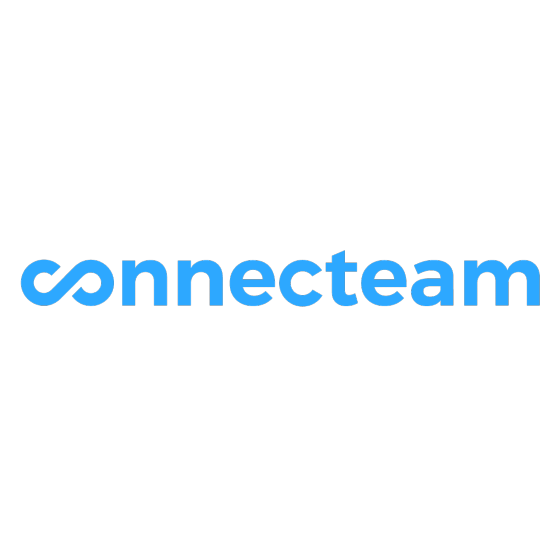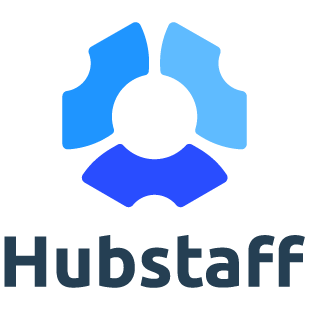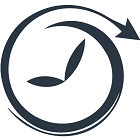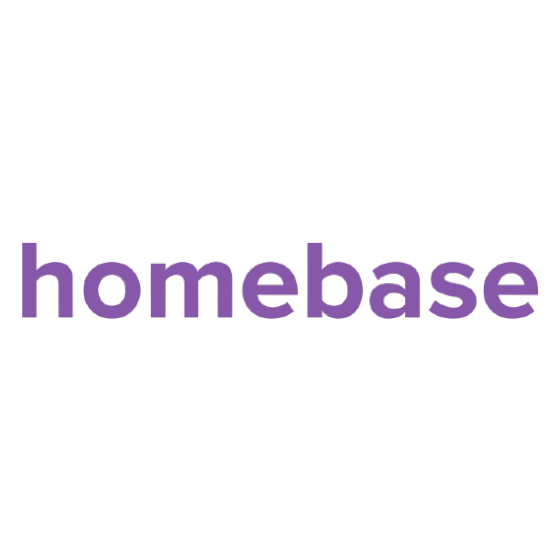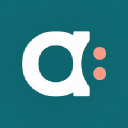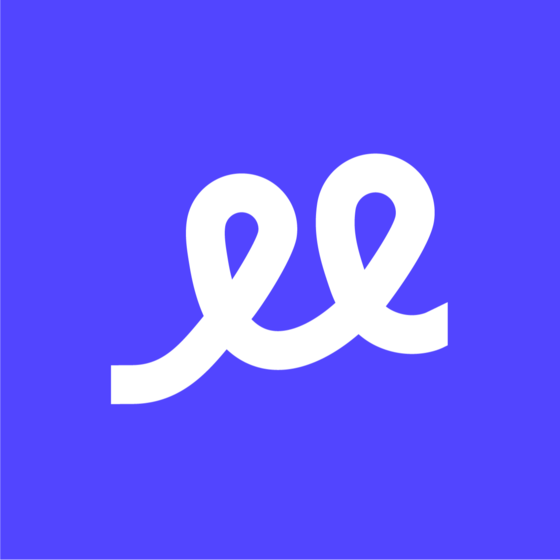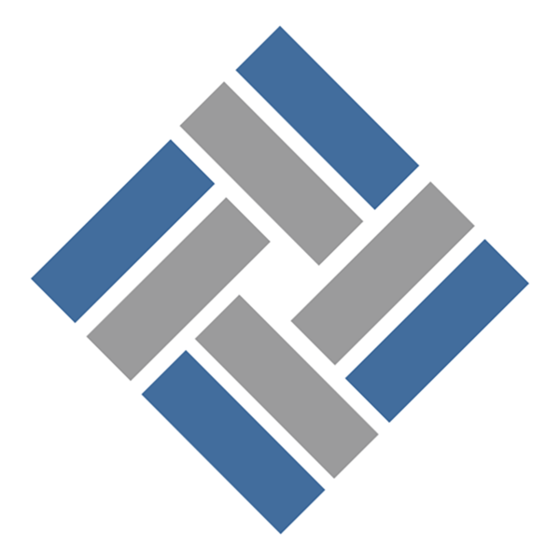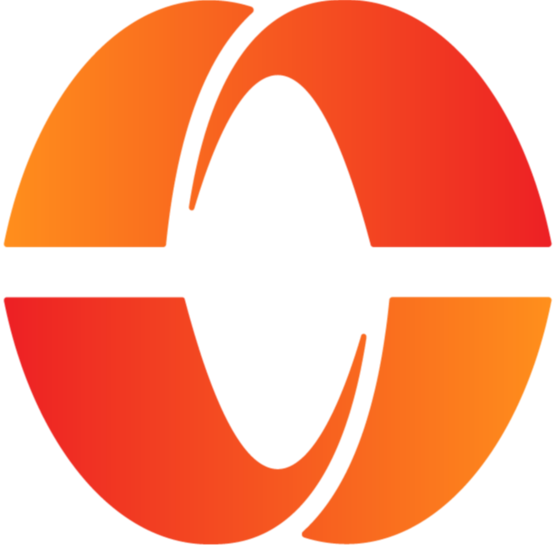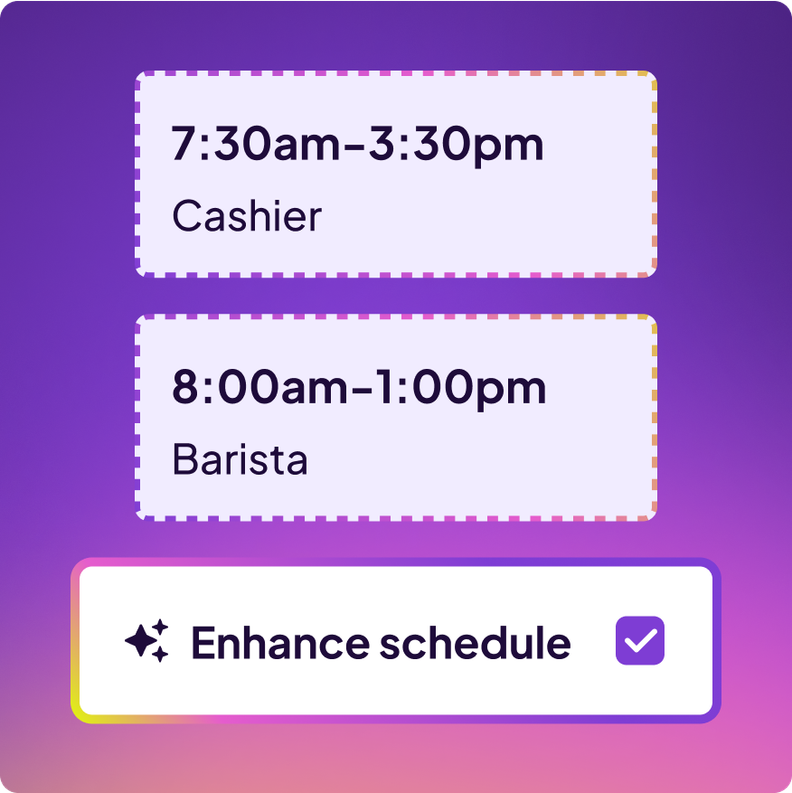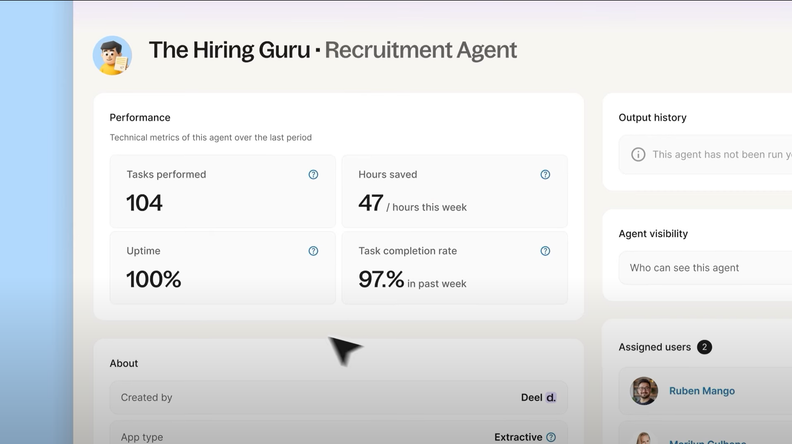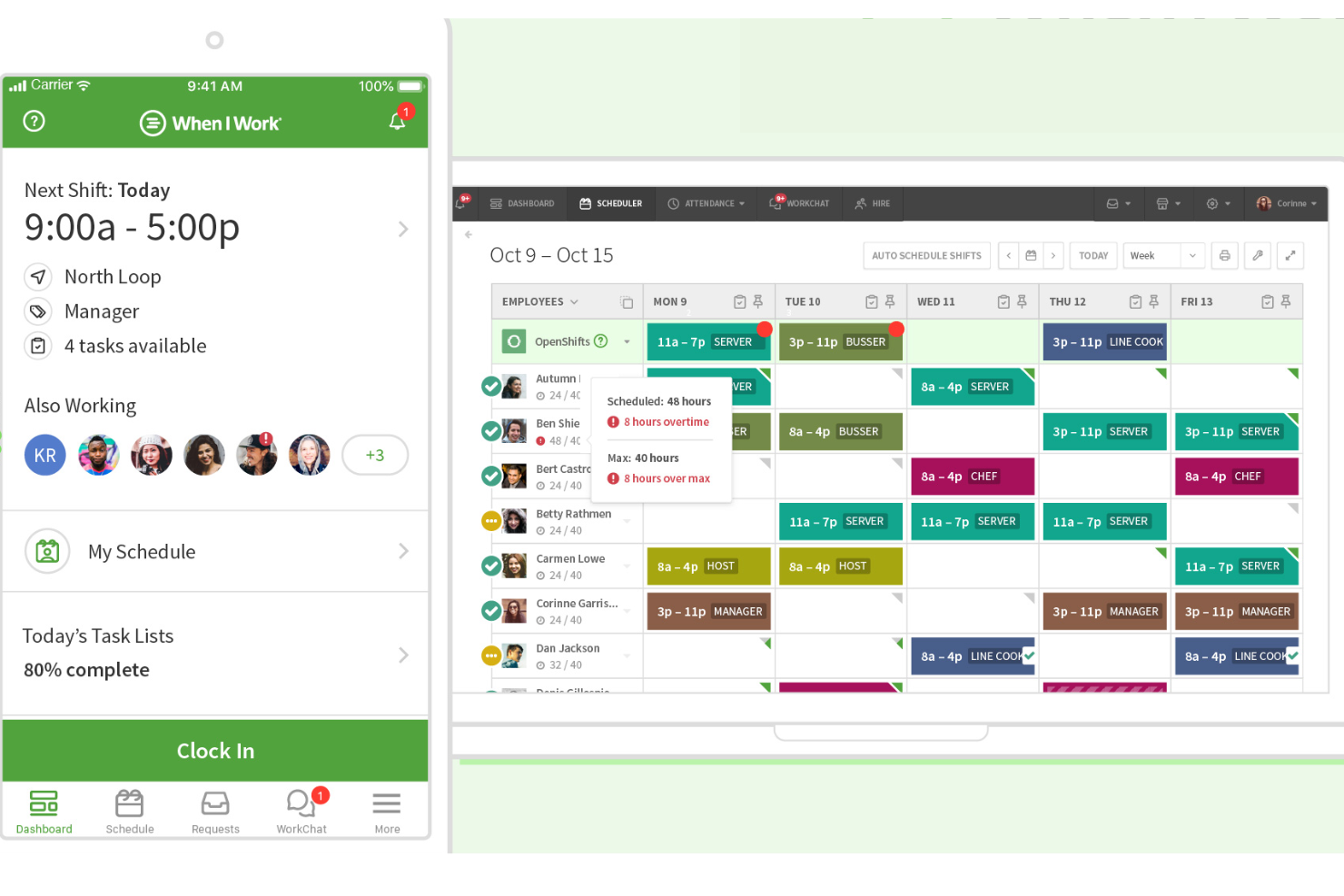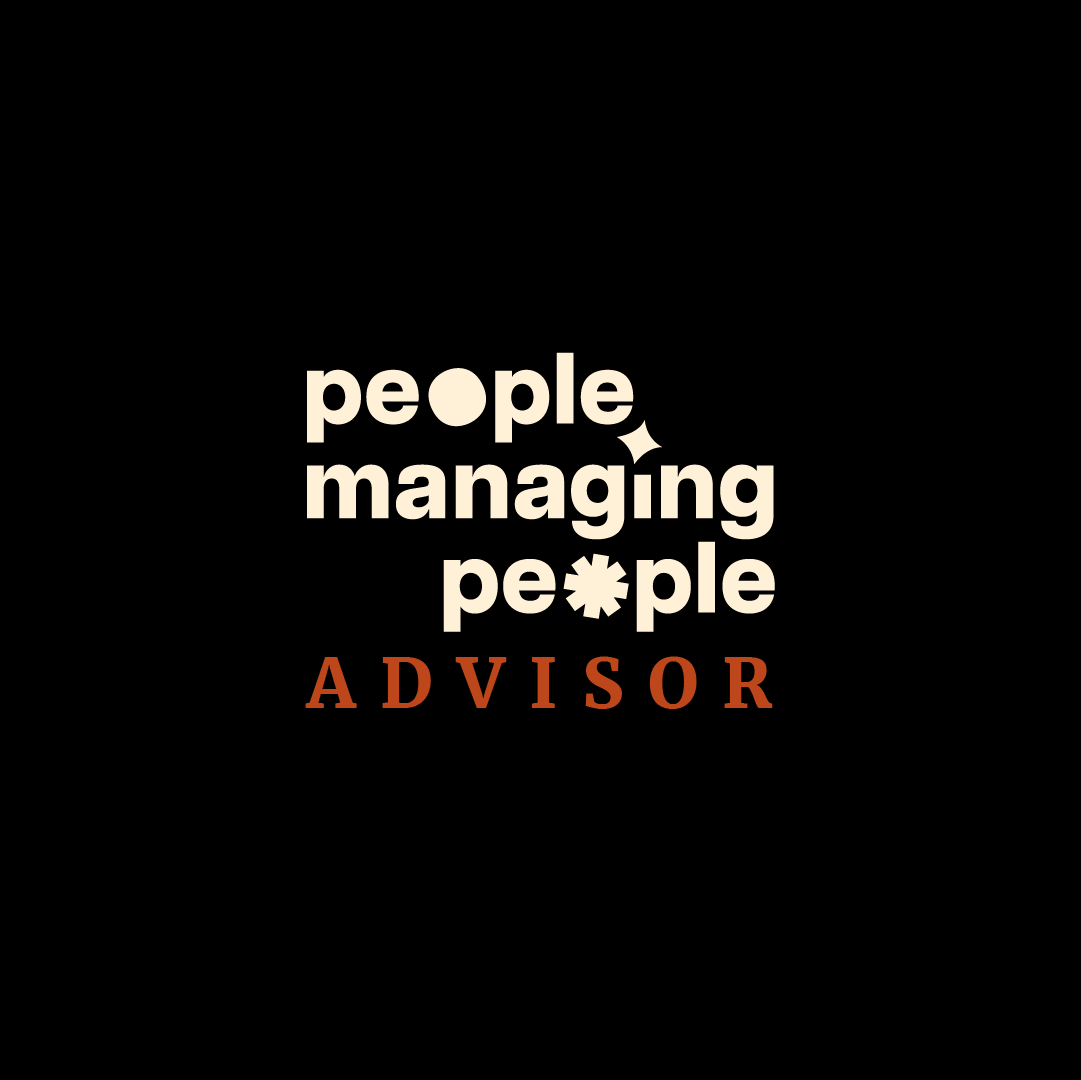Best Employee Time Clock Software Shortlist
Here's my pick of the 10 best software from the 25 tools reviewed.
Employee time clock software provides a seamless solution for tracking work hours, managing schedules, and ensuring accurate payroll processing. However, finding the right software to manage your team’s hours can seem challenging, especially with several options available on the market.
Using my experience in HR software, I tested and reviewed many of the top employee time clock software to help teams find the best solutions. My in-depth reviews below delve into these solutions, highlighting their key features, ease of use, and cost-effectiveness. Whether you’re a small business or a large enterprise, I’m confident you’ll be able to find your next time tracking software from this article.
Why Trust Our Software Reviews
We’ve been testing and reviewing HR software since 2019. As HR experts ourselves, we know how critical and difficult it is to make the right decision when selecting software.
We invest in deep research to help our audience make better software purchasing decisions. We’ve tested more than 2,000 tools for different HR management use cases and written over 1,000 comprehensive software reviews. Learn how we stay transparent & our software review methodology.
Best Employee Time Clock Software Summary
| Tool | Best For | Trial Info | Price | ||
|---|---|---|---|---|---|
| 1 | Best for GPS tracking and geofencing | 14-day free trial + free plan available | From $29/month (for up to 30 users, billed annually) + $0.5/user/month for each additional user | Website | |
| 2 | Best for GPS time tracking | 14-day free trial | From $7/user/month | Website | |
| 3 | Best for customizable reports | 14-day free trial | From $3.99/user/month + $19/month base fee | Website | |
| 4 | Best for mobile clock-in options | Free plan available | From $20/location/month | Website | |
| 5 | Best for remote teams | Free trial + demo available | From $29/month | Website | |
| 6 | Best for shift-based SMBs in Canada | 21-day free trial | From $2/user/month | Website | |
| 7 | Best for HR time and absence management | Free demo available | Pricing upon request | Website | |
| 8 | Best for automatic time mapping | 7-day free trial | From $8/user/month | Website | |
| 9 | Best for flexible time tracking | 30-day free trial + free plan available | From $5/user/month | Website | |
| 10 | Best for geofencing time accuracy | Free trial available | From $2.50/user/month | Website |
-

Kudoboard
Visit WebsiteThis is an aggregated rating for this tool including ratings from Crozdesk users and ratings from other sites.4.8 -

Rippling
Visit WebsiteThis is an aggregated rating for this tool including ratings from Crozdesk users and ratings from other sites.4.8 -

Paylocity
Visit WebsiteThis is an aggregated rating for this tool including ratings from Crozdesk users and ratings from other sites.4.5
Best Employee Time Clock Software Reviews
Here’s my in-depth analysis and overview of each employee time clock software. This will walk you through the pros and cons of each tool, their features, and their best use cases.
Connecteam is an employee time clock software designed to help businesses manage deskless teams efficiently. It combines time tracking, scheduling, and task management in one platform, making it easier to monitor work hours and keep everyone organized.
Why I Picked Connecteam: I picked Connecteam because of its automated time tracking, which makes recording employee hours accurate and effortless. Employees can clock in and out from any device, while GPS tracking and geofencing ensure they’re logging time from approved locations. I also like that it offers built-in scheduling tools, allowing you to assign shifts, send real-time updates, and reduce scheduling conflicts.
Additionally, Connecteam supports task management and internal communication, making it easier to keep teams aligned and ensure tasks get completed on time.
Standout Features and Integrations
Features include timesheets, overtime and break calculations, GPS tracking, geofencing, team communication, task management, document storage, analytics, mobile access, and compliance tools.
Integrations include Gusto, QuickBooks, Xero, Paychex, Zapier, Wix Bookings, Lightspeed POS, PrismHR, Microsoft Azure Active Directory, BambooHR, Google Drive, and Google Calendar.
Pros and cons
Pros:
- Highly customizable features for different industries
- GPS tracking and geofencing improve accountability
- Easy-to-use mobile app for on-the-go access
Cons:
- Geolocation tools may struggle in remote areas
- Learning curve for new admins due to many features
Hubstaff is a digital time tracking tool designed to help teams log work hours accurately across desktop, mobile, and web platforms.
Why I picked Hubstaff: One of the key reasons I like Hubstaff is its GPS-based time tracking and geofencing features. You can set up job sites with geofences so that employees are automatically clocked in or out when they enter or leave a designated area. This is especially useful for field teams or mobile workers, helping to reduce manual errors and prevent buddy punching. Additionally, the GPS tracking allows you to plan routes and provide accurate arrival times to clients.
Standout features & integrations:
Features include project cost tracking, expense management, idle time detection, overtime alerts, time off and holiday tracking, shift scheduling, daily and weekly work limits, manual time entry, task assignments, and activity level tracking.
Integrations include Jira, Slack, Asana, Trello, QuickBooks, Salesforce, GitHub, PayPal, FreshBooks, ClickUp, monday.com, and Zendesk.
Pros and cons
Pros:
- Customizable dashboards and reports for better decision-making
- Automated timesheets simplify payroll processing
- Accurate GPS tracking for remote and field teams
Cons:
- Timesheet approvals are limited to higher-tier plans
- Occasional syncing issues reported between devices
Buddy Punch is an employee time clock software and app that helps businesses simplify employee scheduling, time tracking, and payroll. It offers features such as PTO tracking, automatic payroll integration, and customizable reporting.
Why I picked Buddy Punch: Buddy Punch’s strong reporting capabilities help to set it apart from other scheduling software. Additionally, the software’s ability to create customizable reports makes it an excellent choice for businesses that need detailed insights into employee hours, overtime, and payroll data. This feature is particularly useful for companies that require specific data for compliance, auditing, or performance tracking.
Standout features & integrations:
Features include customizable reports, GPS tracking, real-time monitoring of punch clock changes, quick timesheet approval, automated payroll, and detailed payroll and timesheet reports.
Integrations include QuickBooks, Paychex, Workday, ADP, Gusto, Xero, Zapier, Google SSO, Okta, and OneLogin.
Pros and cons
Pros:
- Real-time monitoring
- GPS tracking
- Customizable reports
Cons:
- Basic mobile app
- No offline mode
Homebase is an employee time clock software designed to help small businesses manage their teams more effectively. It offers a range of features that simplify the process of tracking employee hours and managing schedules.
Why I picked Homebase: One of the reasons I chose Homebase is its time tracking feature, which allows you to monitor employee hours, breaks, and overtime accurately. This ensures your payroll is always correct, saving you from the hassle of manual calculations. Additionally, Homebase provides mobile clock-in options, so your team can clock in and out using smartphones, which is a real plus if you have remote workers.
Another feature that stands out is the location-based clock-in capability. This ensures your team is where they need to be when they clock in, adding an extra layer of accountability. Homebase also integrates with payroll systems, reducing errors by automating data transfer, which can save you time and reduce headaches when it comes to payday.
Standout Features and Integrations
Features include notifications, timesheets, scheduling, team communication, break management, time off requests, overtime calculation, labor cost control, mobile clock-in, location-based clock-in, payroll integration, compliance management, GPS and geofencing, shift swapping, and time tracking.
Integrations include Facebook Leads, Google Sheets, Tiktok Lead Generation, Gmail, Mailchimp, Slack, Shopify, Trello, WooCommerce, ActiveCampaign, Pipedrive, and HubSpot.
Pros and cons
Pros:
- Built-in reporting for labor costs, employee hours, and productivity
- efficient clock-in/out system with location tracking
- easy to set up and navigate, making it accessible for users
Cons:
- Only shows clock-in/out locations, not real-time employee whereabouts
- Lacks notifications for entering geofenced areas
New Product Updates from Homebase
AI-Optimized Scheduling Assistant Unveiled by Homebase
Homebase introduced an AI-optimized Scheduling Assistant that creates staff schedules using availability, work history, and time-off, resolves conflicts quickly, and allows new hires to onboard and set availability via phone. More details at Homebase Releases.
Deel is a global HR and payroll platform built to help businesses hire, manage, and pay workers in multiple countries. It offers compliance, payroll, and HR solutions, making it easier to expand your workforce worldwide.
Why I picked Deel: Deel’s time tracker is ideal for global remote teams. Its easy-to-use clock-in/clock-out widget works on desktop and mobile, letting remote employees log their hours from anywhere. Entries are automatically recorded in timesheets, reducing the chance of payroll errors. Permissions can be set for manual adjustments, so your team can log break times or make corrections as needed. This helps your remote employees stay on track and gives you accurate records to support payroll and productivity.
Standout features & integrations:
Features include invoicing, global payroll support, contractor classification, country-specific compliance, custom employment contracts, expense reimbursement, localized benefits, multi-currency payments, and mobile app support.
Integrations include Google Workspace, Hubstaff, Brex, Personio, Sage, Slack, Microsoft Teams, Workable, UKG Ready, QuickBooks, Xero, and BambooHR.
Pros and cons
Pros:
- Mobile app available
- Good payroll automation features
- Emphasizes global compliance
Cons:
- Could offer the ability to write more detailed notes for different work periods
- Reports could be more customizable
New Product Updates from Deel
Introducing Deel AI Workforce
Deel has launched the AI Workforce, a set of specialized agents designed to handle repetitive HR, payroll, and compliance tasks with speed and accuracy. These AI agents don’t just assist—they execute tasks from start to finish. For more information, visit Deel's official site.
Agendrix is an employee scheduling and workforce management platform built for small and mid-sized businesses with shift-based teams. Alongside its core scheduling functionality, it offers several employee time clock options suited to different working environments.
Why I picked Agendrix: I picked Agendrix because it supports multiple time clock setups that match how Canadian small businesses operate—whether you have fixed-location staff, mobile workers, or hybrid teams. You can set up clock-ins using a tablet kiosk, landline phone, geofenced mobile device, or desktop IP restriction. These flexible options mean you don’t need to invest in extra hardware, which makes it practical for budget-conscious teams. I also like that time entries feed directly into automated timesheets, which are easy to verify for payroll.
Agendrix Standout Features and Integrations:
Features include tablet kiosks with optional facial recognition, and landline clock-ins for teams without internet access. You can set up approval workflows, assign manager permissions by location, and add task lists to shifts to clarify daily responsibilities. They also offer bilingual support and user interface in English and French.
Integrations include QuickBooks, Sage 50, ADP Workforce Now, Nethris, Ceridian Powerpay, Payworks, Acomba, Lightspeed, BeLocum, Hopem, Easypay, Azur, and Folks HR.
Pros and cons
Pros:
- Integrates with major Canadian payroll systems
- Supports printable, email, and mobile schedule sharing
- Built-in messaging and notifications
Cons:
- Certain integrations may require manual setup
- Limited customization options for reports and analytics
Sloneek is an HR platform with strong time and attendance features that help businesses keep work hours, leave requests, and absence records organized. It supports both in-office and remote teams, offering digital timesheets, GPS-enabled attendance, and integrations with popular workplace tools.
Why I picked Sloneek: I picked Sloneek because it combines time tracking with absence management in a way that gives you full visibility into your team’s availability. Employees can clock in and out via web, mobile, or terminal, while managers approve timesheets and leave requests through a clean, calendar-based interface. This flexibility helps you stay on top of attendance, whether your team is on-site, remote, or hybrid.
I also like that it ties into other HR workflows, so you don’t have to juggle multiple tools for time and people management.
Standout features & integrations:
Features include time tracking with GPS, digital work reporting, absence management with calendar-based requests, timesheets, performance reviews with 360 degree feedback, and onboarding tools. You can also manage employee records, documents, and assets in one place.
Integrations include Google Calendar, Jira, Google Workspace, Microsoft 365, MS Active Directory, Looker Studio, Slack, and Microsoft Outlook.
Pros and cons
Pros:
- Strong integration with calendars and HR systems
- Flexible clock-in options, including GPS
- User-friendly interface for employees and admins
Cons:
- Some features are less customizable
- Pricing not publicly listed
Insightful is a workforce analytics and productivity management software designed to improve employee efficiency in remote, hybrid, and in-office settings.
Why I picked Insightful: It offers real-time employee monitoring combined with automatic time mapping and attendance tracking to minimize human error and ensure efficient use of work hours. These capabilities provide actionable insights, allowing you to better allocate resources and manage projects. For example, the software's ability to highlight productivity trends and detect employee burnout supports a healthier work-life balance.
Standout features & integrations:
Features include time tracking, activity monitoring, screen monitoring, location insights, insider threat detection, client billing, capacity planning, project budgeting, scheduling, and PTO management.
Integrations include Asana, Azure DevOps, BambooHR, Basecamp, Bitbucket, ClickUp, GitHub, GitLab, Jira, Microsoft Entra ID, Namely, Okta, Trello, Workday, and Zenefits.
Pros and cons
Pros:
- Can help identify and prevent employee burnout
- Tracks screen and computer activities
- Customizable dashboards
Cons:
- Lacks features suitable for manual labor industries
- Lacks a mobile app, limiting on-the-go usability
TimeTrex is a comprehensive workforce management solution that offers a wide range of tools to help businesses streamline their time and attendance processes.
Why I picked TimeTrex: One of the key reasons TimeTrex stands out is its flexibility in time tracking. Employees can clock in and out using various methods, including web browsers, mobile apps, and even biometric devices, making it highly adaptable to different work environments. The software also supports detailed tracking of work hours, breaks, and overtime, ensuring accurate time records. Additionally, TimeTrex’s automation of overtime calculations and time-off accruals minimizes errors and saves valuable time for HR departments.
Standout features & integrations:
Features include automatic job costing, customizable user permissions, geofencing for mobile workers, multi-language support, compliance management, employee self-service, attendance policy enforcement, and real-time reporting.
Integrations include QuickBooks, ADP, Sage, Paychex, Xero, Microsoft Excel, Google Calendar, PayPal, Slack, and SAP.
Pros and cons
Pros:
- Comprehensive time tracking abilities
- Integrated payroll and HR management
- Advanced scheduling tools include shift planning and time-off management
Cons:
- Setting up the software can be difficult
- User interface looks outdated
When I Work is an employee time clock software that simplifies how your team tracks work hours. It allows employees to clock in and out using their mobile devices or a designated terminal, making attendance management straightforward.
Why I picked When I Work: One reason I chose When I Work is its geofencing feature, which ensures employees are on-site before they clock in. This means you can be confident that team members are where they need to be, reducing the chances of time theft. Additionally, the software provides real-time reporting, offering insights into attendance patterns and labor costs, helping you make informed staffing decisions. I also like that your team can clock in and out directly from their smartphones, adding flexibility and convenience, especially for remote or field workers.
Standout features & integrations:
Features include labor cost management, schedule integration, timesheet editing, absenteeism tracking, payroll integration, shift planning, team messaging, mobile access, photo clock-in, early clock-in prevention, GPS enforcement, and compliance monitoring.
Integrations include Gusto, ADP, Square Payroll, Paychex, QuickBooks Online, Onpay, and Zapier.
Pros and cons
Pros:
- Facilitates team communication
- Integrated scheduling and time tracking
- Flexible clock-in options
Cons:
- Time and attendance tracking is a paid add-on
- Could offer more customizable scheduling options
Other Employee Time Clock Software
Below is a list of additional employee time clock software that I shortlisted. While they didn’t make the top 10, they’re still valuable and worth further research.
- Clockify
For unlimited free users
- Jibble
For free time tracking with face recognition
- WebHR
For all-in-one HR automation
- ClockInEasy
For face recognition
- Rhumbix
For construction timekeeping and payroll
- edays
For global absence management
- Lathem
For remote team management
- Vericlock
For real-time labor cost monitoring
- Time Clock Wizard
For affordable time tracking
- Open Time Clock
For multiple clock-in methods
- OnTheClock
For small business time tracking
- WebWork Time Tracker
For time tracking with screenshots
- Paylocity
For tracking time with geofencing
- Bonsai Agency Software
For project-driven agencies
- Monitask
For precise time tracking and online timesheets
Related HR Software Reviews
If you still haven't found what you're looking for here, check out these other related tools that we've tested and evaluated:
- HR Software
- Payroll Software
- Recruiting Software
- Employer of Record Services
- Applicant Tracking Systems
- Workforce Management Software
Employee Time Clock Software Selection Criteria
The criteria for choosing an employee time clock software should directly address buyer needs and common pain points, ensuring that the software serves its intended purpose effectively. As an expert who has personally tried and researched these tools, here are the requirements I use when evaluating software:
Core Functionality: 25% of total weighting score
- Accurate time tracking
- Employee scheduling
- Reporting and analytics
- Integration with payroll systems
- Compliance with labor laws
Additional Standout Features: 25% of total weighting score
- Mobile app accessibility
- Biometric time tracking
- Geofencing capabilities
- Customizable reporting
- Integration with other HR tools
Usability: 10% of total weighting score
- Intuitive user interface
- Drag-and-drop scheduling
- Easy navigation
- Customizable dashboards
- Minimal learning curve
Onboarding: 10% of total weighting score
- Availability of training videos
- Interactive product tours
- Chatbots for instant help
- Webinars for in-depth training
- Pre-built templates for quick setup
Customer Support: 10% of total weighting score
- 24/7 customer support availability
- Multiple support channels (phone, email, chat)
- Knowledge base and FAQs
- Dedicated account managers
- Quick response times
Value For Money: 10% of total weighting score
- Competitive pricing
- Transparent pricing models
- Free trial or demo availability
- Flexible subscription plans
- Cost-benefit analysis
Customer Reviews: 10% of total weighting score
- Overall satisfaction ratings
- Feedback on ease of use
- Comments on customer support
- Reviews on feature effectiveness
- Testimonials on ROI and value
How to Choose an Employee Time Clock Software
As you work through your own unique software selection process, keep the following points in mind:
- Ease of Use: The software should be intuitive and user-friendly for both administrators and employees. A complex interface can lead to errors and frustration, reducing the overall efficiency of the system.
- Integration Capabilities: Ensure the software can seamlessly integrate with your existing systems such as payroll, HR, and project management tools. This is important for maintaining a streamlined workflow and avoiding data silos.
- Mobile Accessibility: In today’s mobile-first world, having a time clock software that offers mobile access is essential. This is particularly important for businesses with remote or field employees who need to clock in and out from various locations.
- Reporting and Analytics: The ability to generate detailed reports on employee hours, overtime, and attendance is vital for making informed business decisions. Look for a software that offers customizable reporting options to meet your specific needs.
- Security Features: Protecting employee data is paramount. Choose a time clock software that offers strong security measures such as data encryption, secure login, and compliance with data protection regulations.
Trends for Employee Time Clock Software
Here are some trends I’ve noticed for employee time clock software, plus what they might mean for the future. I sourced countless product updates, press releases, and release logs to tease out the most important insights.
- Biometric Authentication: Biometric authentication is gaining traction, as it enhances security by using unique biological traits. This reduces the risk of time theft.
- Mobile Integration: Mobile integration allows employees to clock in and out via smartphones. This trend supports remote work and flexible schedules and also simplifies time tracking for field workers.
- AI-Powered Analytics: AI-powered analytics provide insights into workforce patterns. This helps in optimizing schedules and improving productivity and also aids in identifying potential issues before they escalate.
- Cloud-Based Solutions: Cloud-based solutions offer real-time data access from anywhere. This is vital for businesses with multiple locations. It also ensures data is securely stored and easily retrievable.
- Geofencing: Geofencing technology ensures employees clock in only when they are at the designated location. This prevents fraudulent clock-ins and is particularly useful for businesses with multiple job sites.
As technology advances, employee time clock software continues to evolve, offering more sophisticated features. These trends not only enhance accuracy and security but also streamline workforce management, making it easier for businesses to adapt to flexible and remote working arrangements.
What is Employee Time Clock Software?
Employee time clock software is a tool that helps businesses track and manage employee work hours. It’s commonly used by HR departments, managers, and employees to ensure accurate timekeeping, payroll processing, and compliance with labor laws.
The software typically includes components such as time tracking, attendance monitoring, and reporting features. It may also integrate with payroll systems, allowing for smooth data transfer and reducing manual entry errors.
Features of Employee Time Clock Software
Choosing the right employee time clock app can significantly impact the accuracy of payroll, compliance with labor laws, and overall operational efficiency. Here are some of the most important features to look for when shopping for an employee time clock software:
- Accurate Time Tracking: Accurate time tracking ensures that employees' work hours are recorded precisely, reducing errors in payroll and preventing time theft.
- Biometric Authentication: Biometric systems, such as fingerprint scanning or facial recognition, provide a secure and accurate method for employees to clock in and out, eliminating buddy punching and time fraud.
- Mobile Accessibility: Mobile capability allows employees to clock in and out using their mobile devices, making it easier to track time for remote or field workers.
- Payroll Integration: Integration with payroll systems automates the transfer of time data, reducing manual entry errors and streamlining the payroll process.
- User-Friendly Interface: An intuitive and easy-to-navigate interface ensures that employees can quickly learn and use the system, minimizing training time and increasing adoption rates.
- Reporting and Analytics: Advanced reporting and analytics features provide insights into employee attendance, overtime, and productivity, helping managers make informed decisions.
- Customizable Settings: Customization options allow businesses to tailor the software to their specific needs, including setting rules for overtime, breaks, and time-off requests.
- Geofencing and GPS Tracking: Geofencing and GPS tracking ensure that employees are clocking in from approved locations, which is particularly useful for businesses with mobile or remote workforces.
- Compliance Management: Compliance features help businesses adhere to labor laws and regulations by automatically calculating overtime, breaks, and other labor-related rules.
- Real-Time Notifications: Real-time notifications alert managers to issues such as missed punches, late arrivals, or overtime, enabling prompt action to address any discrepancies.
Selecting the right employee time clock software involves considering features that enhance accuracy, security, and ease of use. By focusing on these key features, businesses can improve their time-tracking processes, ensure compliance, and boost overall productivity.
Benefits of Employee Time Clock Software
Employee time clock software offers a range of advantages for both users and organizations, streamlining time management and enhancing productivity. Below are some additional primary benefits you may experience while using an employee time clock software.
- Accurate Time Tracking: The software ensures precise recording of employee work hours, reducing errors and discrepancies in payroll processing.
- Increased Productivity: By automating time tracking, employees can focus more on their tasks, leading to higher efficiency and output.
- Enhanced Compliance: The software helps organizations adhere to labor laws and regulations by maintaining accurate records of work hours and overtime.
- Cost Savings: Automated time tracking reduces the need for manual entry and administrative tasks, saving time and reducing labor costs.
- Improved Employee Accountability: The software provides transparency in work hours, encouraging employees to adhere to their schedules and improving overall accountability.
Investing in an employee time clock software can significantly benefit organizations by improving accuracy, productivity, compliance, cost-efficiency, and accountability. These advantages make it a valuable tool for businesses looking to optimize their workforce management.
Costs & Pricing of Employee Time Clock Software
Selecting the right employee time clock software can be important for effective workforce management. There are multiple plans available, each catering to different business needs and budgets.
Here’s a breakdown of typical plan options and their pricing to help you make an informed decision.
Plan Comparison Table for Employee Time Clock Software
| Plan Type | Average Price | Common Features |
| Free Plan | $0 | Basic time tracking, limited users, and mobile app |
| Basic Plan | $10/user/month | Time tracking, employee scheduling, and reports |
| Standard Plan | $20/user/month | All Basic features, advanced scheduling, GPS tracking, and integrations |
| Premium Plan | $30/user/month | All Standard features, PTO management, and biometric verification |
| Enterprise Plan | Custom Pricing | All Premium features, custom integrations, and dedicated support |
When choosing a plan, consider the size of your team and the specific features you need. By comparing different options, businesses can find a time clock software that meets their budgetary constraints while enhancing workforce management and productivity.
Employee Time Clock Software FAQs
Here are answers to frequently asked questions I’ve received about employee time clock software.
How can employee time clock software integrate with payroll systems?
Employee time clock software can integrate with payroll systems through APIs or built-in connectors. This integration allows the automatic transfer of time and attendance data to the payroll system, reducing manual entry errors and ensuring accurate payroll processing. Some software solutions offer pre-built integrations with popular payroll systems, while others may require custom development.
What are the compliance considerations for using an employee time clock software?
Compliance considerations include adhering to labor laws and regulations regarding time tracking, overtime, and breaks. The software should support accurate record-keeping and reporting to meet legal requirements. Additionally, it should offer features like audit trails and secure data storage to protect employee information and ensure compliance with data privacy laws.
Can employee time clock software handle multiple locations and remote workers?
Yes, many employee time clock software solutions are designed to handle multiple locations and remote workers. They often provide mobile apps or web-based portals that allow employees to clock in and out from anywhere. GPS tracking and geofencing features can ensure that employees are clocking in from authorized locations.
How does employee time clock software manage shift scheduling and changes?
Employee time clock software typically includes shift scheduling features that allow managers to create, modify, and assign shifts easily. Employees can view their schedules, request changes, and swap shifts through the software. Notifications and alerts can be set up to inform employees of schedule changes in real time.
What are the data security measures in employee time clock software?
Data security measures in employee time clock software include encryption of data in transit and at rest, secure user authentication, and role-based access controls. Regular security audits and compliance with industry standards such as GDPR or CCPA are also important to ensure the protection of sensitive employee information.
What support and training options are available for employee time clock software?
Support and training options vary by provider but often include online resources such as user guides, video tutorials, and FAQs. Many providers also offer live support through phone, email, or chat. Some may provide on-site training or webinars to help organizations get the most out of their software.
How can employee time clock software be customized to fit specific business needs?
Customization options in employee time clock software can include configurable settings for time-tracking rules, overtime calculations, and reporting formats. Some software solutions offer custom development services to create features tailored to specific business requirements. Additionally, many platforms allow for the integration of third-party tools and applications to extend functionality.
What’s Next?
To remain up to date on all the latest in people management, subscribe to our newsletter for leaders and managers.

